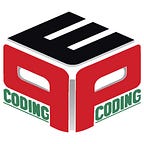What do we mean by big data? As the name suggests, is it just the bigger version of data? If only it would have been that easy, right? Well, obviously big data is related to Data, so before we begin, let’s briefly understand all about Data.
What is Data?
Data in computing refers to information that has been converted into a format that is easy to transport or process. This information is translated into binary digital form, as it relates to today’s computers and transmission devices easily. It is allowed to use data as either a solitary or plural subject. The term “raw data” is referred to data when it is in its most basic digital version.
The CPUs, semiconductor memory, and disc drives, as well as many of the peripheral devices that are used in computing today, are all based on binary digit representations. Punch cards were used as early computer input for both control and data, followed by magnetic tape and the hard drive.
The prevalence of the words “data processing” and “electronic data processing,” which, for a while, came to include the whole spectrum of what is now known as information technology, signaled the importance of data in corporate computers.
What is Big Data?
Big data is a discipline that deals with methods for analyzing, methodically extracting information from, or otherwise dealing with data volumes that are too massive or complicated for typical data-processing application software to handle.
Data with a lot of fields (columns) have better statistical power, however, data with a lot of characteristics or columns have a higher false discovery rate.
A few issues of big data analysis are-
- Data capture
- Storage and analysis
- Search, sharing, transfer
- Visualization
- Querying
- Updating information privacy
- Data sourcing
The three major notions of big data were initially related to three important concepts: Volume, diversity/Variety, and Velocity. Because massive data analysis poses sampling issues, only observations and samples were previously allowed. Furthermore, it results in comprising data in enormous amounts that typical software cannot process in an equitable amount of time or for a reasonable price. And guess what, now Big Data consists of 2 more notions- Veracity and Value
5 V’s of Big Data
- Volume
- Variety
- Velocity
- Veracity
- Value
As we mentioned before, Big Data used to be defined by 3Vs, but recently it got 2 more Vs added to its definition. Let’s discuss the 5Vs and why are they concluded as Big Data.
1. Volume:
- The term ‘Big Data’ refers to a huge amount of information.
- Similarly, the term “volume” refers to a large amount of data.
- The magnitude of data plays a critical role in determining its worth. When the amount of data is extremely vast, it is referred to as ‘Big Data.’ This means that the volume of data determines whether or not a set of data may be classified as Big Data.
- As a result, while dealing with Big Data, it is vital to consider a certain ‘Volume.’
2. Velocity:
- The term “velocity” refers to the rapid collection of data.
- Data comes in at a high rate from machines, networks, social media, mobile phones, and other sources in Big Data velocity.
- A large and constant influx of data exists. This influences the data’s potential, or how quickly data is created and processed in order to satisfy needs.
- Data sampling can assist in dealing with issues such as ‘velocity.
3. Variety:
- It refers to the organized, semi-structured, and unstructured data types.
- It can also refer to a variety of sources.
- Variety refers to the influx of data from new sources both inside and outside of an organization.
- It might be organized, semi-organized, or unorganized.
— Structured data is just data that has been arranged. It usually refers to data that has been specified in terms of length and format.
— Semi-structured data is a type of data that is semi-organized. It’s a type of data that doesn’t follow the traditional data structure. This sort of data is represented by log files.
— Unstructured Data, this data is essentially disorganized data. It usually refers to data that doesn’t fit cleanly into a relational database’s standard row and column structure.
4. Veracity:
- It refers to data inconsistencies and uncertainty, i.e., accessible data can become untidy at times, and quality and accuracy are difficult to control.
- Because of the numerous data dimensions originating from several distinct data kinds and sources, Big Data is also volatile.
- For example, a large amount of data might cause confusion, yet a smaller amount of data can only transmit half or incomplete information.
5. Value:
- After considering the four V’s, there is one more V to consider: Value! The majority of data with no value is useless to the organization until it is converted into something beneficial.
- Data is of no utility or relevance in and of itself; it must be turned into something useful in order to extract information. As a result, Value! might be considered the most essential of the five V’s.
Phew! It was a lot to take in, or was it? To learn more about Big Data in detail, check out our Free Content on NADOS 2.0 here. Learn and enhance your knowledge with Pepcoding, and it’s community- interact, connect and collaborate with peers and industry specialists. Also, get career opportunities and placement assistance. What are you waiting for? Visit Pepcoding today!
